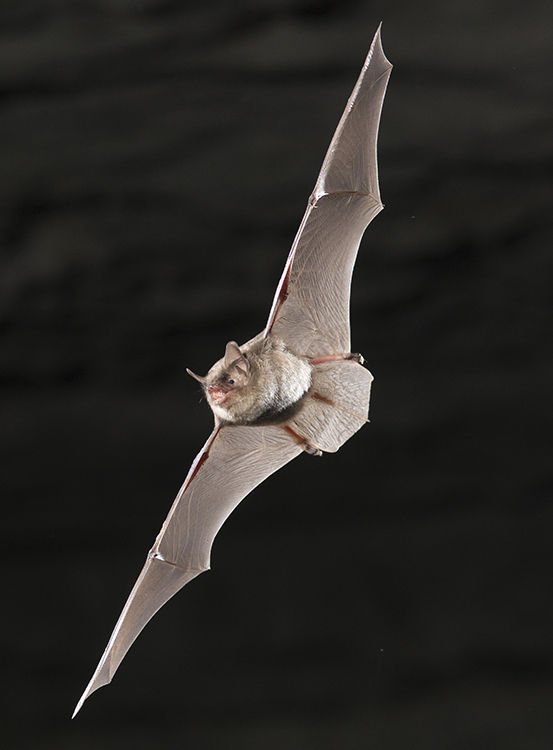Adopt the Indiana Bat
Protection Status
Federal: Endangered
New York: Endangered
Connecticut: Endangered
Massachusetts: Endangered
Pennsylvania: Endangered
New Jersey: Endangered
Vermont: Endangered
About the Indiana Bat
The Indiana Bat, Myotis sodalis, is a cave bat, hibernating in groups in caves and other cavernous structures throughout the winter with about 42% of the entire population migrating to Indiana to hibernate for the winter.
The Indiana bat's historic range covers a broad area of the United States, stretching west to the Ozark region in eastern Oklahoma and Iowa, north to southern Wisconsin and Michigan, and east to New York, New England, and northern New Jersey. Its southern range extends to northern Alabama and Arkansas.
The Indiana bat has historically been found across various locations, with many places known for their winter hibernation and summer maternity colonies. In 2007, records showed that these bats were hibernating in approximately 281 caves and mines across 19 states and formed maternity colonies in 16 states.
Because of the impacts of White-nose Syndrome and the ongoing decline of its natural habitat, the Indiana bat has significantly declined or disappeared from much of its former range, especially in the northeastern United States, decreasing its once extensive range presence.
Indiana bats exhibit dynamic behaviors; individuals from a single hibernation site will often spread out and form multiple maternity colonies in the summer. These colonies may consist of bats from different hibernation sites, with individuals using many different trees as roosts during the warmer months. This behavior could lead to reconnecting populations of bats to increase population rebound potential with the support of conservation and restoration initiatives, allowing for a broad migration range.




